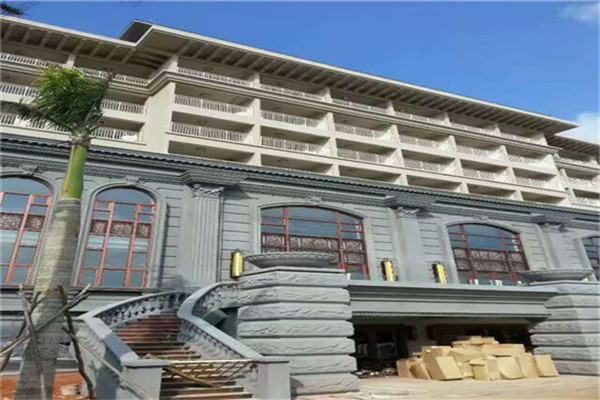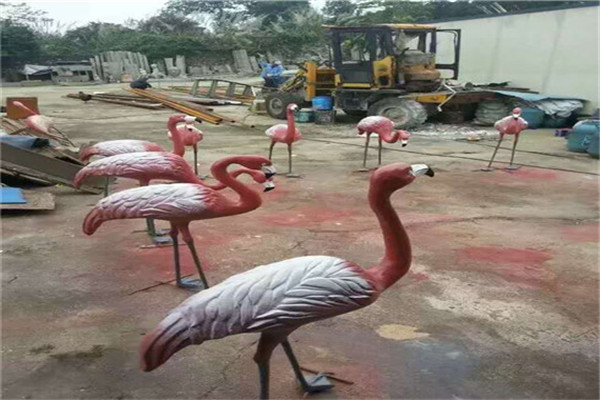
Button carving refers to the carving of the buttons on the upper part of the seal. It belongs to the category of round carving and has a rich three-dimensional sense. However, compared with round carving, it has three significant characteristics. First, the image is small, limited to the size of the seal, which is generally less than 10 cubic centimeters; The second is to show only the upper part of the object, rather than the round sculpture, which needs all-round performance; In addition, the performance content of button carving is mostly animals, especially animals in ancient legends, such as chi, lion, dragon, tiger, exorcism, taotie, etc. Therefore, button carving is also called "animal button". The history of button carving is linked with seals. Only seals can make buttons. According to relevant historical research, the earliest seal started in the Zhou Dynasty, more than 3000 years ago. The original seal is a symbol of power and status, and is a special item for princes, generals and ministers, and Dada dignitaries. The original seal button was also very simple and simple, just drilling a small hole on the top of the seal to wear strong ties for carrying, so the seal button is also called "seal nose". With the continuous development of history, a strict hierarchy has emerged in the materials and buttons of seals according to the different positions and official titles of users. For example, the official seal of the Qin Dynasty, in addition to using gold, silver, copper and other materials to distinguish the level of the official seal, also distinguishes the decoration of the button. In the Han Dynasty, the emperor used tiger buttons with jade seals, the crown prince, the lieutenants, the prime minister, the lieutenant, the sangong, and the left and right generals used gold seal tortoise buttons, and the officials of the two thousand stone Dai Lu used bronze seal elephant buttons Since then, the buttons used by all dynasties, from the monarch down to the officials of various products, were mostly chi, lion, dragon, phoenix, tiger, exorcism, taotie, unicorn, camel, bird, claw, bear, bat and other animals in the zodiac, depending on their positions.

Common architectural styles of GRC include European style, Mediterranean style, North American style, modern style, neoclassical style, new Chinese style, etc. In the practical application of new Chinese style buildings, the overall use of wood frame structure, or change the solid wood to concrete and wood like paint to reduce costs; Then, stone materials such as cornices, brackets, moldings, flower pots, etc. of buildings are replaced by GRC components sprayed with stone like paint, which can reduce a lot of material costs, reduce costs, and achieve design results. Hainan GRC components are applicable to the external walls of various styles of buildings. They are rich in shapes, exquisite and elegant. They provide a variety of creative choices for architectural designers. They can reflect the decorative style of buildings to a large extent, and are a new green decorative material.

The art of carving various patterns and images on stones, usually also refers to sculpture handicrafts carved from stones. Chinese stone carving can be divided into bluestone carving, marble carving, white marble carving, talc carving, black crystal carving, colored stone carving, pebble carving, etc. Hui'an, Fujian, is famous for its bluestone carvings for architectural decoration and stone lions, among which the mouth of the stone lion contains stone beads that roll freely, and is famous in Southeast Asia. The marble carving in Yunnan is made from the marble of Diancang Mountain. Its patterns are like colored mountains and rivers, or dangerous peaks and valleys, or waterfalls follow the clouds. The inlaid furniture is unique. White marble carvings in Quyang, Hebei, Fangshan, Beijing and other places were mainly used for palace architectural decoration in the Ming and Qing dynasties, such as Huabiao, stone lions, railings, etc; Modern times are used for decoration of public and memorial buildings, such as the Great Hall of the People, the Monument to the People's Heroes, Chairman Mao's Memorial Hall, etc. Talc carvings in Haicheng, Liaoning Province and Laizhou, Shandong Province use small and cute animals as traditional varieties. The carvings of black crystal stone in Dongkou, Hunan and Lichuan, Hubei are dark and bright. Caishi carving is mainly produced in Qingtian, Zhejiang, Shoushan, Fuzhou, and Liuyang, Hunan. Pebble carvings are mainly produced in Lanzhou, Shenyang and other places. Stone carving techniques include intaglio (contour carving), shadow carving, relief, round carving (complete three-dimensional carving without any background), and openwork (also known as openwork). Shadow carving is a unique technique of Fujian Hui'an bluestone carving. It uses steel drills of different sizes to chisel on the bluestone, and uses the size, depth and density of the drill points to express the images of landscapes, birds, animals, people, flowers, etc.

The traditional method is to brush lime water or wall powder, but it is easy to be polluted and cannot be scrubbed with wet method. It is mostly used for general buildings. More advanced buildings use flat ready mixed paint as decoration material, which is rich in color and is not easy to be polluted, but the volatile amount of organic solvent mixed in is large, which pollutes the atmosphere and affects the health of construction personnel, Nanchang EPS exterior wall With the development of science, organic synthetic resin raw materials are widely used in paint, which has fundamentally changed the appearance of paint products and is called paint, becoming an important kind of interior and exterior wall decoration materials. There is a long history of papering interior walls and ceilings, but it has been replaced by plastic wallpaper and fiberglass wall covering. EPS exterior wall manufactor Hainan sculpture gypsum board has the characteristics of fire prevention, sound insulation, heat insulation, light weight and high strength, and convenient construction, which is mainly used for walls and flat roofs; When making a flat roof, holes with various patterns can be punched to improve the sound absorption and decoration effect. Calcium plastic board has a good decorative effect, can keep warm and sound, and is a multi-functional board. Marble and granite plates are increasingly used to decorate high-end hotels and apartments.

The tasks of decoration design are: first, to achieve the use function of the building itself, reasonably improve the material level of the indoor environment, so that people can be satisfied mentally, and improve the quality of the physical and psychological environment of the indoor space. Modern interior decoration design should apply modern scientific and technological rules and aesthetic laws, especially the principle of applicability and economy for residential buildings, and strive to make the interior space layout reasonable, good ventilation and lighting, and be conducive to furniture layout, so as to create an ideal indoor environment with less people, money, and things, and improve the material living standard. It should also follow the aesthetic principles to create a personalized and beautiful indoor environment, which fully reflects the spiritual connotation of different functional spaces and use objects. A designer can make interior design comfortable, scientific and artistic only if he has rich knowledge, high artistic accomplishment and the ability to solve practical problems.





